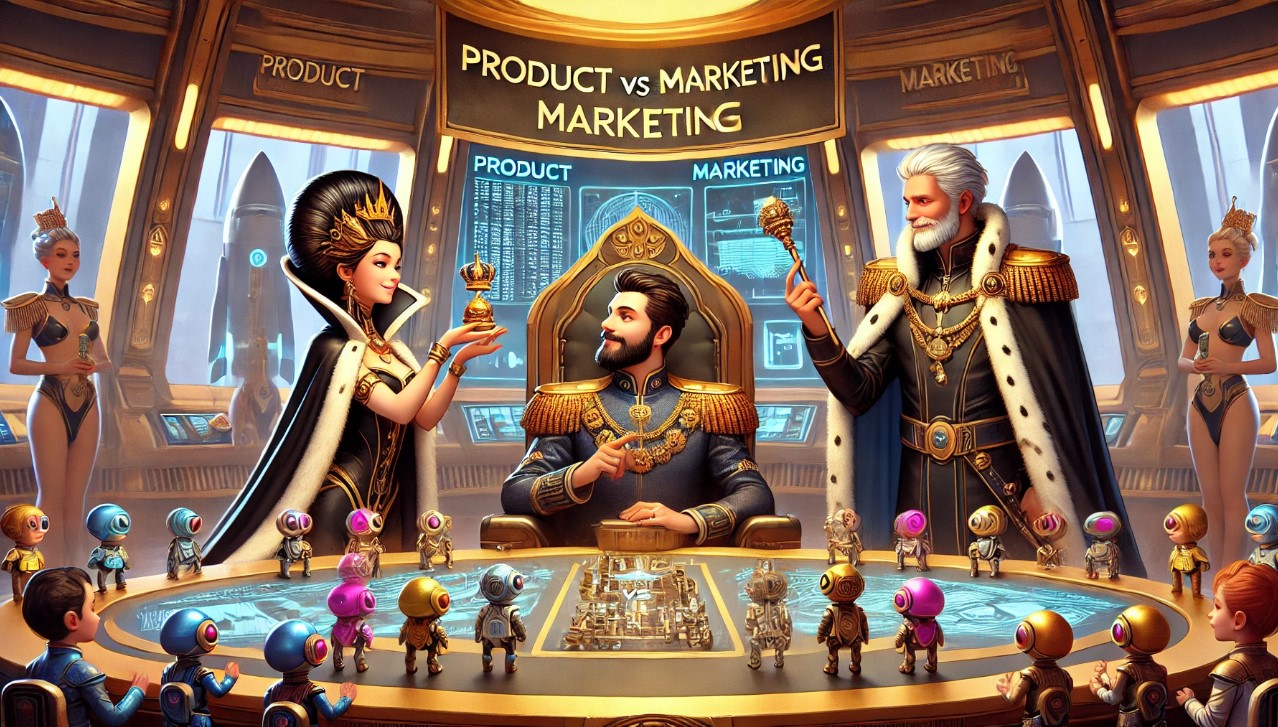Version française/French version: LINK
A startup must juggle with limited resources, making the allocation of technical and commercial resources delicate. In certain industrial sectors, commercial costs represent up to 30% of the product’s selling price, highlighting the importance of optimizing these expenses. Tech startups must also dedicate significant resources to marketing and sales to refine their positioning, reach a critical mass of customers, and ensure their growth. Metrics such as Customer Acquisition Costs are crucial for optimizing your commercial strategy. Increasing the perceived value by your customers will also allow you to increase your prices. By involving all stakeholders in the budgeting process and celebrating commercial successes, you will forge a shared vision and strategy.

A startup is destined to achieve feats with limited resources. Allocating these resources between technical and commercial functions often becomes a headache for entrepreneurs. It’s a frequent source of disagreement between « engineers » and « salespeople » because each sees things from their own perspective:
- For some, marketing a product on a large scale riddled with defects will tarnish your reputation and overwhelm your technical and commercial support.
- Conversely, procrastinating on commercial actions and under sizing the corresponding resources risks missing your target and delaying your rise to power.
The challenge is therefore to find the right balance in allocating technical and commercial resources.
Technical teams tend to believe that a good product sells itself, but this is far from always being the case, even in sectors where engineers reign supreme, such as the automotive industry.
In this industry, where every penny counts to optimize production costs, expenses related to the promotion and distribution of a vehicle can reach up to 30% of the selling price. This underscores how essential it is for a young innovative company to optimize marketing and commercial expenses.
Are tech startups an exception?
For « deep tech » startups, R&D takes the lead… provided that you have clearly defined the uses and, more specifically, the problems your offering is supposed to solve.
When you’re developing a new therapeutic molecule or a quantum computer, scientific and technical developments will naturally be decisive and require considerable resources. But the marketing and commercial expenses required to prepare the commercialization of your offering will not be marginal either.
For the vast majority of startups, whose success depends mainly on speed and quality of execution, the primacy of technique in resource allocation is far from obvious.
The art of Formula 1 with a small engine
In his book on the saga of the startup PriceMinister, Pierre Kosciusko-Morizet mentions epic debates between his technical director and his marketing director regarding budgetary choices. As platform audience development was a critical issue, « PKM » frequently arbitrated in favor of marketing, leading the technical manager to comment that he was being asked to « do Formula 1 with a 2CV engine« .
Even though the CEO praised the talent of the technical team, he supplemented this automotive metaphor: what’s the use of seeing racing cars circling a track if there’s no one to watch the race? Indeed, it’s indisputable.
In short, frugality is essential at the beginning, but the need to create a critical mass of customers who will enable you to develop word-of-mouth leads to not being miserly in the resources allocated to marketing and sales.
CAC and LTV: Let’s avoid the sauce being more expensive than the fish
Proponents of the « lean startup » approach are well aware of this imperative of frugality and the need to develop a minimum viable product to confront it with the real demand from customers and refine the offering accordingly.
The challenge then is to identify early adopters, « those who are ready to pay the fastest and the most, » as my colleague Frédéric Iselin puts it.
This brings us to the concepts of CAC and LTV, scrutinized by venture capital professionals:
- The Customer Acquisition Cost (CAC) represents marketing and sales expenses divided by the number of annual orders. This ratio allows, among other things, to analyze the virality of your offering, your conversion rate, and your acquisition costs per segment.
- The Lifetime Value (LTV) represents the average total profit per customer throughout their relationship with your company. This ratio is sensitive to the proportion of recurring sales and your retention costs.
Thus, the CAC measures what it costs a company to acquire a new customer, while the LTV measures the total value that a customer brings to your company as long as they are a customer. These metrics are essential for evaluating the effectiveness of your marketing and sales strategy. Thus, the CAC should logically decrease as your number of loyal customers increases. When the LTV/CAC ratio is less than 1, the sauce is obviously more expensive than the fish, and the viability of your startup is questionable.
Increasing perceived value and optimizing costs
Optimizing your costs is a logical concern to remain competitive, but you must never lose sight of the value you create for your customers. If, for a particularly receptive segment of customers, this perceived value is considerable, you may even be able to increase your prices.
To stay in the automotive field, we can still mention Tesla, which pre-sold 400,000 cars for $14 billion in 2016, even though its annual production capacity was only 20,000 vehicles.
Traction at the expense of finishes?
At that time, several industry experts pointed out that the finishes of Tesla cars were not as perfect as those of other vehicles. However, it is undeniable that the perceived value of a Tesla was elsewhere, namely as a « computer-auditorium on wheels » with an exceptional driving experience.
Even in this emblematic case of a product developed by very inspired engineers, these vehicles didn’t sell themselves, and Tesla had to set up an integrated distribution network, including a vehicle service and delivery center, the construction cost of which Elon Musk mentioned in 2021 amounted to $1 billion.
Build budgets together and celebrate commercial victories
To avoid tensions related to the allocation of limited resources, we recommend building budgets together to create a consensus on vision and implementation. If all decision-makers are consulted on objectives and means, the propensity to fairly share the « chores » of implementation will be strengthened.
In the same spirit, it is useful to collectively celebrate commercial successes by highlighting the achievements of all your teams: technical, commercial, and support.
These forecasts and your choices of allocation of scarce resources will thus be a shared process that will strengthen the coherence of your teams.
In the end, early sales industrialization is often more opportune than perfecting the product itself, especially for execution-oriented startups whose valuation will depend a lot on the growth of your sales and profits.
Celebrating both small and large successes together helps to share the decisions made and makes them less bitter for those whose budget is « sacrificed ».


